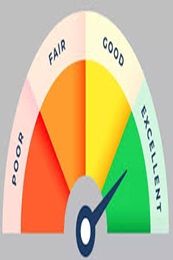Two-Wheeler Loan Subsidies: Government Schemes and Benefits Explained
April 12, 2025

Owning a two-wheeler in India has become more accessible thanks to various government loan schemes and subsidies. These initiatives aim to promote affordable transportation and encourage the adoption of electric vehicles. Let's explore the different schemes and bike loan subsidies available across India.
National Schemes
1. FAME II Scheme
The Faster Adoption and Manufacturing of (Hybrid and) Electric Vehicles (FAME II) scheme is India's flagship initiative for promoting electric mobility.
Key Features:
- Subsidy of up to ₹10,000 per kWh for the first 10 lakh buyers
- Additional incentives for scrapping old vehicles (up to ₹7,000)
- Buyback schemes (up to ₹12,000)
- Total budget allocation of ₹10,000 crore
- Aims to support 7,000 e-Buses, 5,00,000 e-3 Wheelers, 55,000 e-4 Wheeler Passenger Cars and 10,00,000 e-2 Wheelers
2. Electric Mobility Promotion Scheme (EMPS) 2024
EMPS 2024 focuses on boosting the adoption of electric two-wheelers (e-2W) and three-wheelers (e-3W) for commercial use.
Key Features:
- Subsidies of up to ₹10,000 per kWh for e-2Ws
- Up to ₹25,000 for small e-3Ws
- Up to ₹50,000 for large e-3Ws
- Promotes development of the EV manufacturing industry
- Aligns with the vision of Atma Nirbhar Bharat
State-Specific Schemes and Subsidies
Two wheeler loan subsidies and incentives vary significantly from state to state. Here's a snapshot of some state-specific offerings:
State | Subsidy Amount | Additional Benefits |
Delhi | Up to ₹30,000 for e-2W | Road tax and registration fee waiver |
Maharashtra | Up to ₹25,000 for e-2W | 25% subsidy on first 10,000 vehicles |
Gujarat | Up to ₹20,000 for e-2W | Registration fee waiver |
Tamil Nadu | 50% of cost or ₹25,000 (whichever is less) | Specific scheme for working women |
Karnataka | 15% of vehicle cost or ₹10,000 | Road tax exemption |
Tamil Nadu: Amma Two-Wheeler Scheme for Working Women
This scheme is designed to empower working women in Tamil Nadu.
1. Eligibility Criteria:
- Native and residing in Tamil Nadu
- Aged between 18-40
- Valid two-wheeler or learner's license
- Annual income ≤ ₹2,50,000
2. Benefits:
- Subsidy of up to 50% of vehicle cost or ₹25,000 (whichever is less)
- Applicable for gearless/auto-geared two-wheelers with engine capacity ≤ 125cc
Impact of Two-Wheeler Loan Subsidies
- Reduced loan burden
- Lower interest rates in some cases
- Tax exemptions (e.g., road tax waivers)
- Potential insurance premium benefits for electric two-wheelers
Sample Calculation:
For an electric two-wheeler costing ₹1,00,000 under the FAME II scheme:
- Battery capacity: 2 kWh
- Subsidy rate: ₹10,000 per kWh
- Total subsidy: ₹20,000
This subsidy significantly reduces the overall cost, making the two-wheeler more affordable.
Final Thoughts
Two-wheeler loan subsidies and government loan schemes provide substantial loan benefits for Indian buyers. These initiatives make bike ownership more accessible and affordable, particularly for electric vehicles. The combination of national schemes like FAME II and state-specific subsidies offers a range of options for potential buyers.
Ujjivan SFB offers Chakra Loan - a two-wheeler loan that's designed to offer maximum convenience, including ease of application, competitive interest rates, financing up to 95% of the on-road price of the vehicle and more.
FAQs
1. What is the FAME II scheme?
FAME II is a government initiative offering subsidies for electric vehicle purchases, including two-wheelers.
2. How much subsidy can I get under FAME II for an electric two-wheeler?
Up to ₹10,000 per kWh for the first 10 lakh buyers.
3. Are there state-specific subsidies for two-wheelers?
Yes, many states offer additional subsidies and benefits for two-wheeler purchases, especially electric models.
4. What is the Amma Two-Wheeler Scheme?
It's a Tamil Nadu government scheme offering subsidies for working women to purchase two-wheelers.
5. Can I avail both central and state subsidies for my two-wheeler purchase?
In most cases, yes. Central schemes like FAME II can be combined with state-specific subsidies.
6. Are there any tax benefits for purchasing an electric two-wheeler?
Many states offer road tax exemptions for electric two-wheelers
7. What documents are typically required to apply for two-wheeler loan subsidies?
Usually, proof of identity, address, income, and vehicle purchase documents are required.
8. Do all two-wheelers qualify for government subsidies?
No, subsidies are often specific to electric or low-emission vehicles
9. How do I apply for two-wheeler loan subsidies?
Application processes vary by scheme. Check with your state's transport department or authorized dealerships.
10. Can I get a subsidy if I've already purchased a two-wheeler?
Generally, subsidies are applicable at the time of purchase. Retroactive claims are usually not accepted.
Latest Blogs

Does Checking CIBIL Score Frequently Lower Your Credit Points?
April 07, 2025
Imagine you're planning to apply for a home loan, a credit card, or even a car loan. Naturally, you want to ensure your CIBIL score is in good shape before proceeding.

Explained: Can NRIs Buy an Agricultural Land in India?
April 03, 2025
Real estate investment is often a top priority for Non-Resident Indians (NRIs) looking to retain strong financial ties to India.

How to Improve Your CIBIL Score from 600 to 750: A Step-by-Step Guide
April 02, 2025
Your CIBIL score is like your financial reputation—banks check it before approving loans or credit cards. If your score is hovering around 600, you might face difficulties in securing credit or may get loans with higher interest rates.

What Happens When You Leave Your Savings Account Unused?
April 01, 2025
Imagine waking up one day to find that your hard-earned money is locked away and inaccessible. Sounds stressful, right? This is precisely what happens when you leave your Savings Account inactive for too long.

Unified Pension Scheme (UPS): Everything You Need to Know
March 29, 2025
The Pension Fund Regulatory and Development Authority (PFRDA) has announced the Unified Pension Scheme (UPS) will be operational from April 1, 2025.




